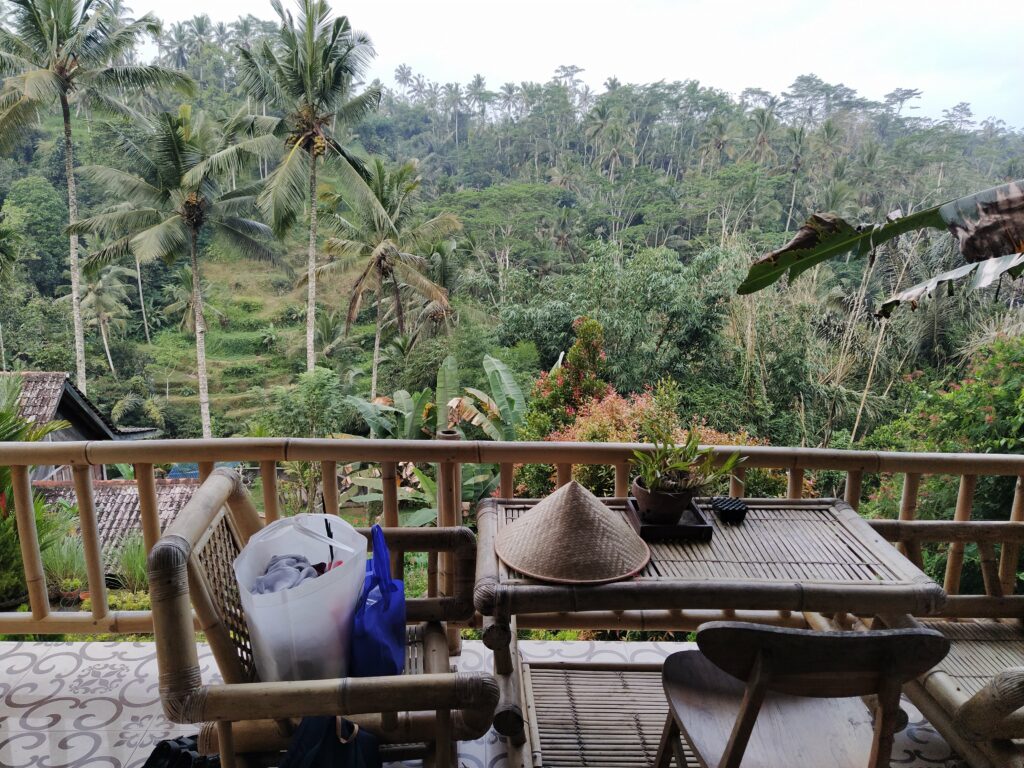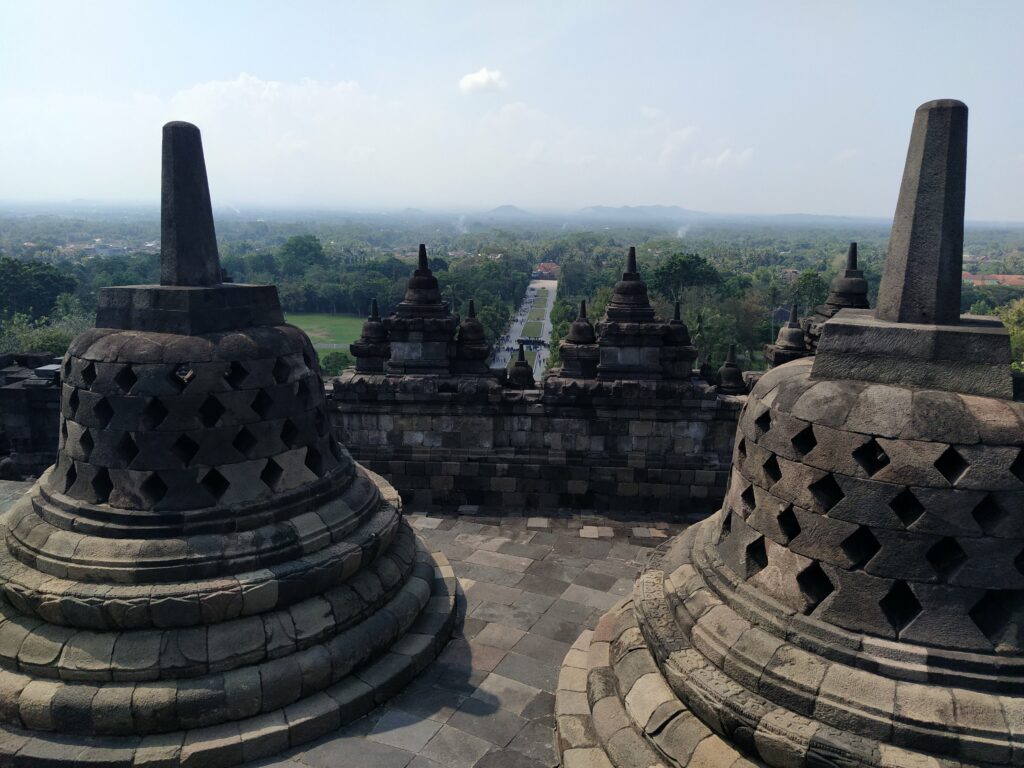Bali is a magical destination and the most famous island in Indonesia, combining beautiful beaches, rich culture, and stunning nature. For us, Bali is a place that has something for everyone – from nature and adventure lovers to those seeking peace or a cultural experience. What makes Bali special is the strong sense of community, as the locals follow their traditions and ceremonies with great devotion, the delicious food, and the amazing hospitality of the people.
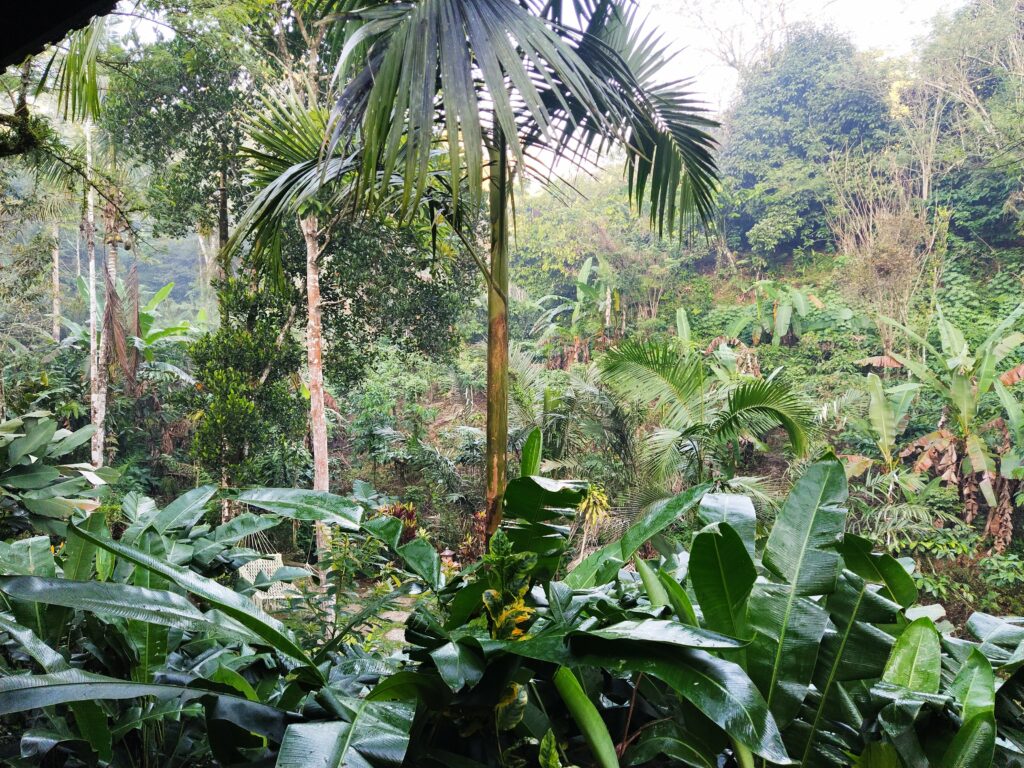
We spent 4 beautiful days in Bali, and here’s what you can do and where to stay on this unique island if you have limited time available.
What to see in 4 days in Bali
Bali is a wonderful destination that’s worth spending time on. However, if you only have 3-4 days, no problem. With proper planning, you can enjoy many things Bali has to offer. For transportation around the island, as we mentioned in a previous article, a very good option is to hire professional drivers, which you can easily book through your accommodation. Generally, prices in Bali range around 100 euros for 10 hours, including visits to attractions and transportation to your hotel. If you’re 3-4 people, this price is quite reasonable since you’ll have an experienced driver to take you wherever you want on the island. Don’t forget to agree on the places you want to visit each day in advance. All the drivers we had spoke English and were very cooperative, friendly, and ready to answer all our questions. So, we highly recommend this method of transportation in Indonesia, as it gives you direct contact with locals.
First day
The main gateway to Bali is the international airport located in Denpasar, the capital of Bali (southern part). The airport is modern, with décor that immediately puts you in the island’s atmosphere. There, we were greeted by the driver we had already booked in advance. Our first stop after the airport is Kuta, the most famous beach in Bali. The beach is generally clean, with a large organized section with sunbeds, but if you prefer, you can bring your equipment. The rest of Kuta is very touristy, with shops, malls, cafes, and restaurants catering exclusively to tourists. So, we decided not to stay longer and continue our journey.
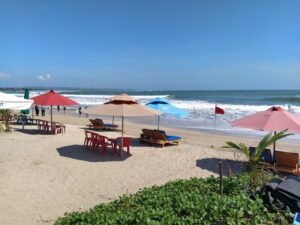
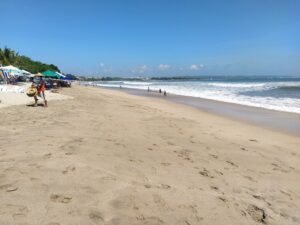
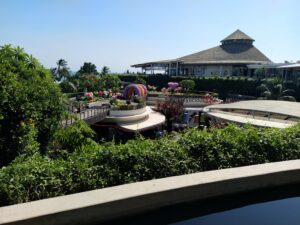
Just 24 kilometers from Kuta Beach, you will find the Hindu temple Tanah Lot. However, to get there, you should definitely allow one to two hours, as the roads are single-lane and there is a lot of traffic congestion. If you’re lucky and have a scooter, everything can be done faster. The Tanah Lot temple is dedicated to the sea god Brahma, built on a rock by the sea, and it is one of the most popular temples in Bali. Unfortunately, there was a ceremony happening, so we couldn’t visit it up close. Nevertheless, the area is very beautiful and definitely worth a visit.

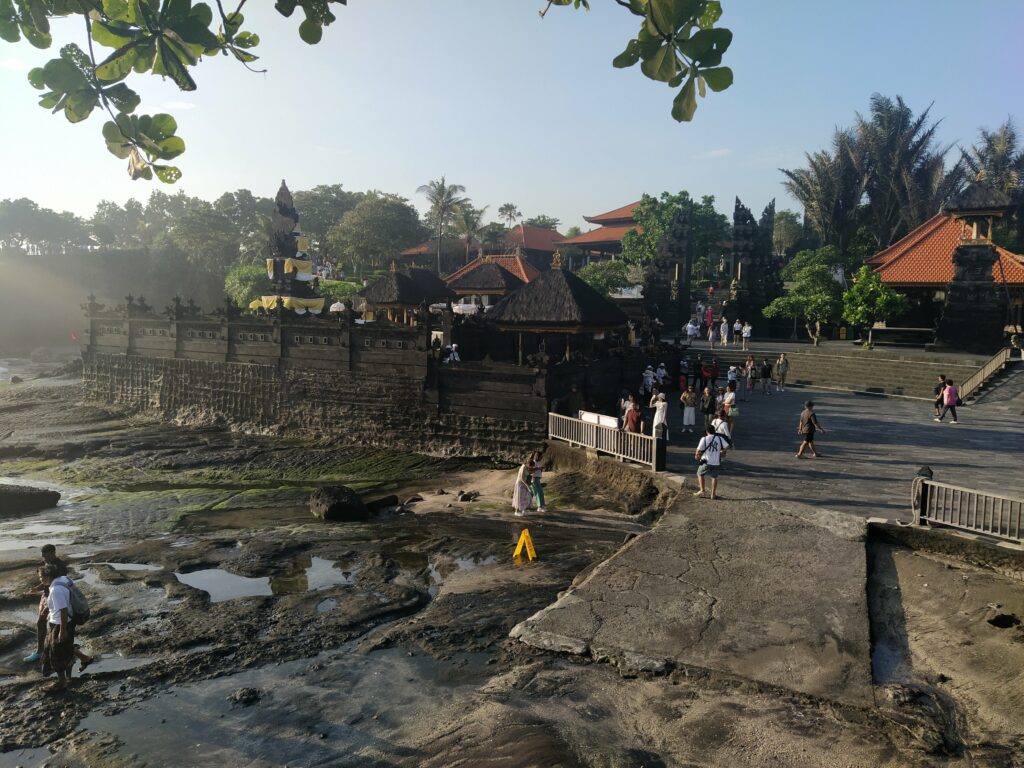
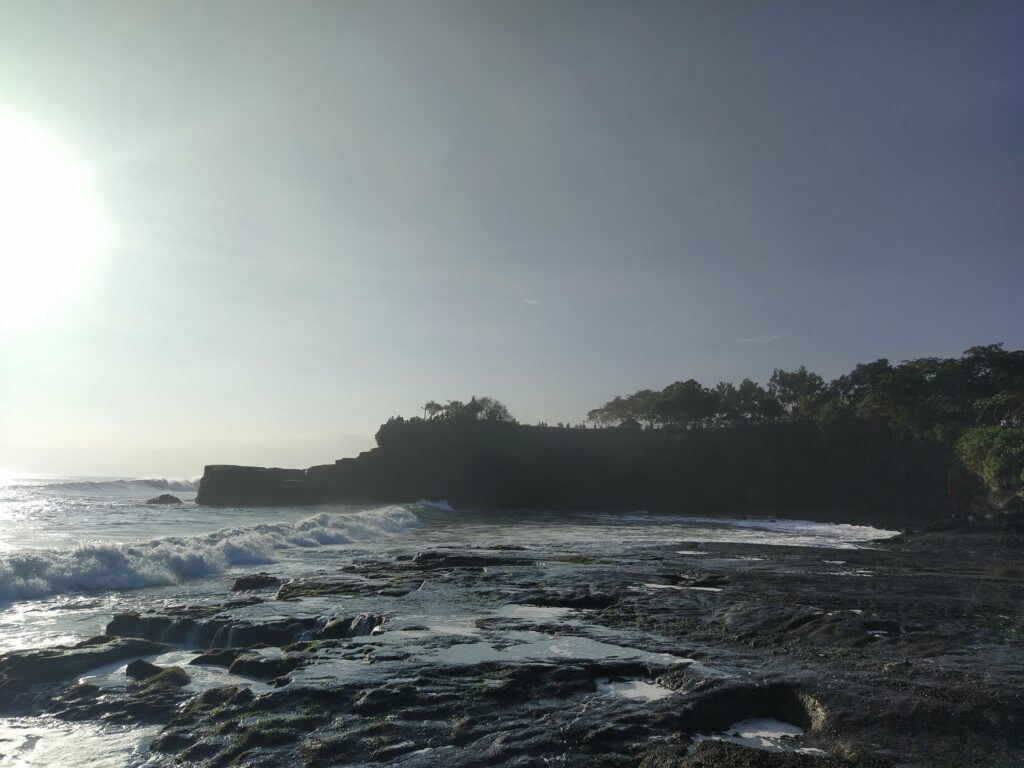
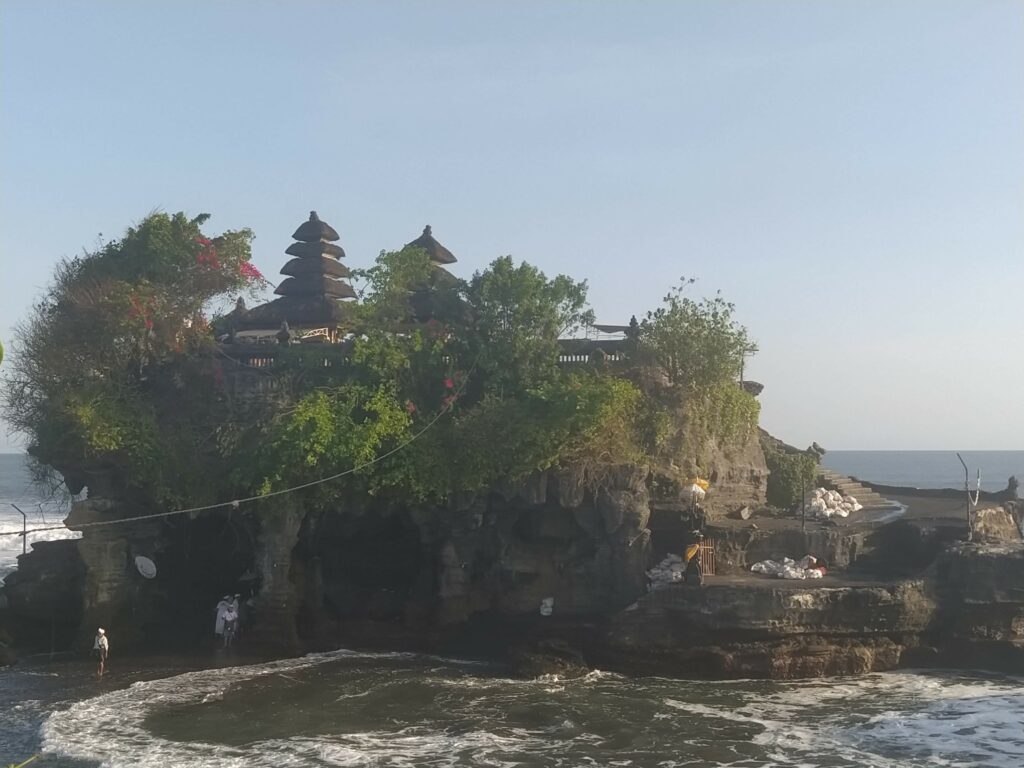
What is impressive in Bali is the presence of small temples everywhere, as well as the daily offerings to the gods. The locals are devout, follow their traditions, perform ceremonies for every aspect of their lives, and build individual and family temples in every community.
Second day
After an excellent breakfast at our hotel, we head to the northern part of Bali, where the journey is spectacular. It’s worth making stops to enjoy the view and to come into contact with the macaques that roam freely in Bali.
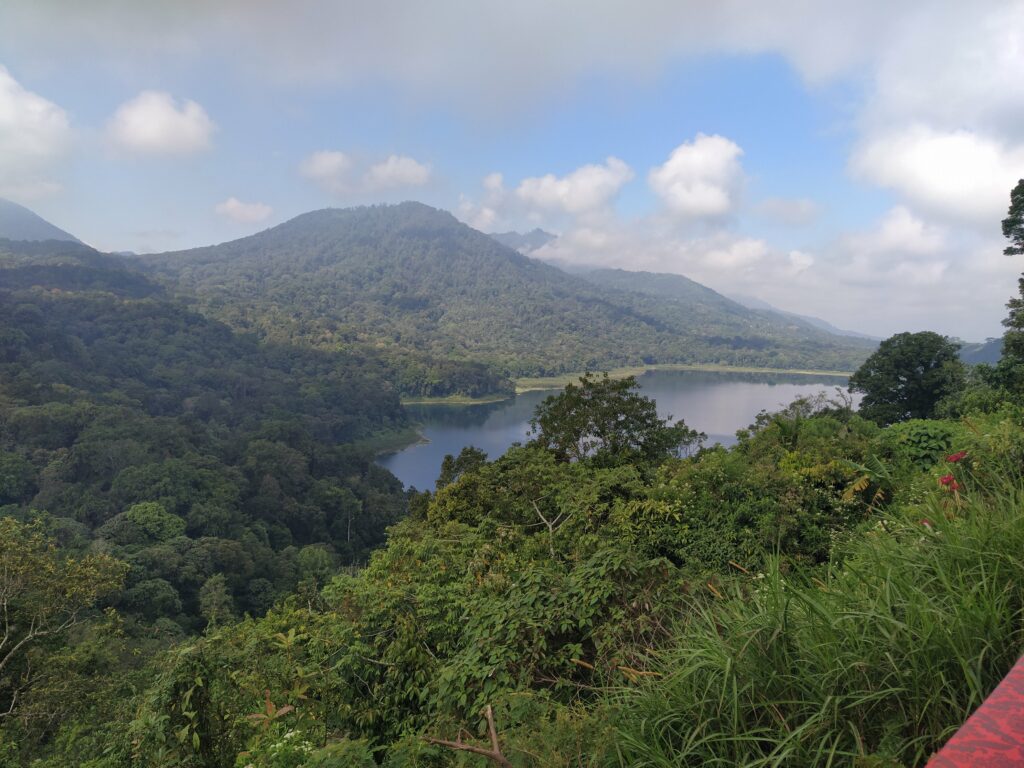
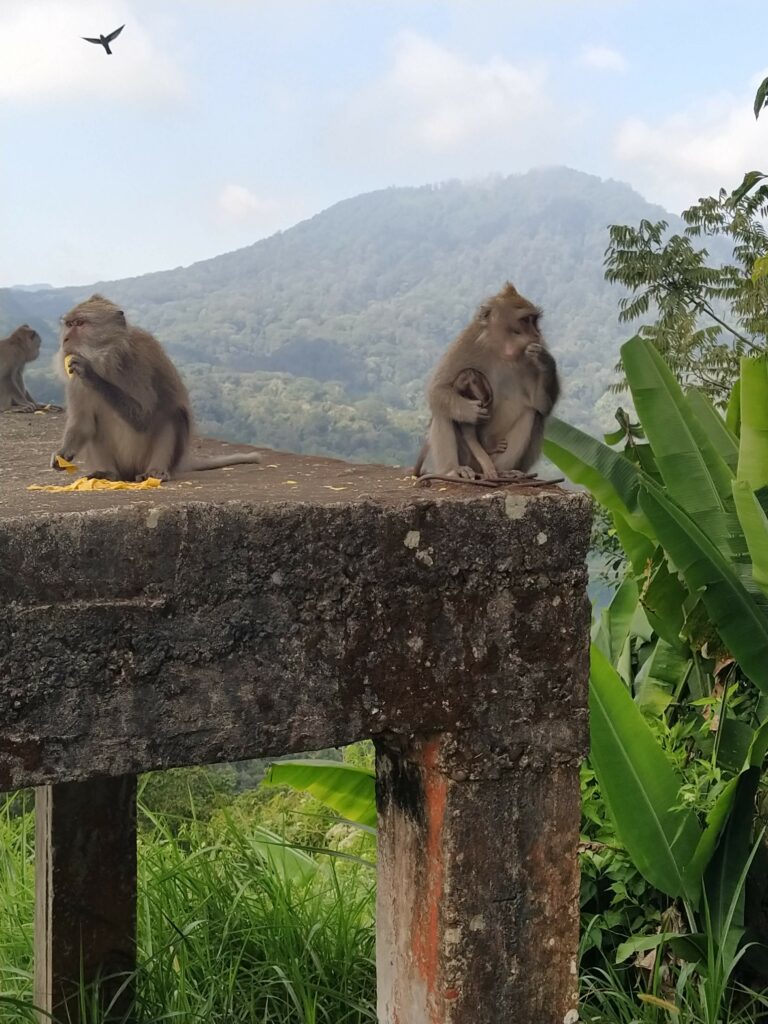
Next, we visit the Pura Ulun Danu Bratan, undoubtedly one of the most enchanting and beautiful places in Bali. The temple is dedicated to the water goddess, Dewi Danu, and is built on the water of Lake Bratan, creating a fairytale-like atmosphere. The temple features traditional Balinese architecture with many towers (meru) that represent various gods and aspects of the island’s religion.
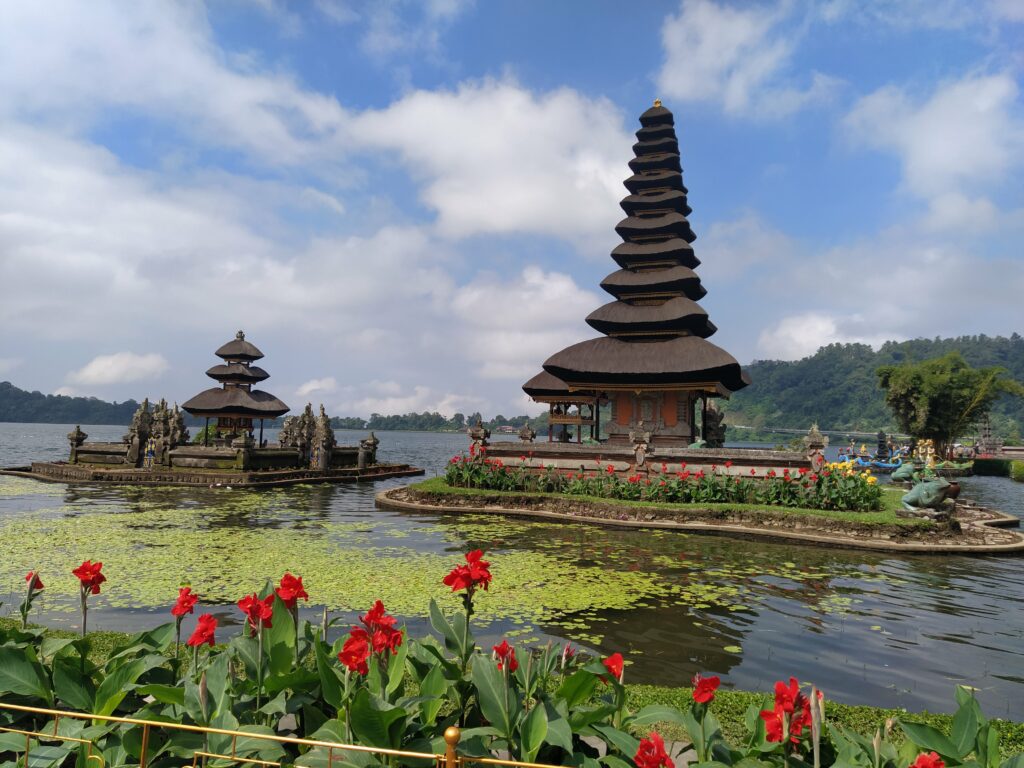
We continue eastward towards the village of Kintamani, with a stunning view of Mount Batur. There, we also find the Hindu temple Pura Ulun Danu Batur. We wear traditional attire, sarongs, which we can rent for a very low fee at the temple entrance. The absence of tourists and the mist create a different ambiance in the atmosphere.
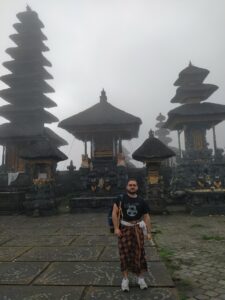
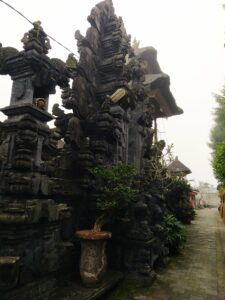
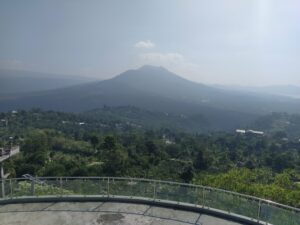
One hour away from Kintamani, you’ll find the Besakih temple, the most sacred and important temple in Bali. It is located in the Agung area (Mount Agung), the highest mountain on the island, and is considered the “mother” religious center of the Balinese. Its location on the mountain, combined with the grandeur of the complex, gives it a strong spiritual and symbolic value. The temple is dedicated to the gods of the Hindu Pantheon of Bali and is a place of worship for all Balinese people. It is the most sacred religious complex on the island and combines many smaller sacred sites, each dedicated to different gods and deities. The Balinese believe that visiting this temple brings blessings and protection, not only for the individual but also for the community as a whole.
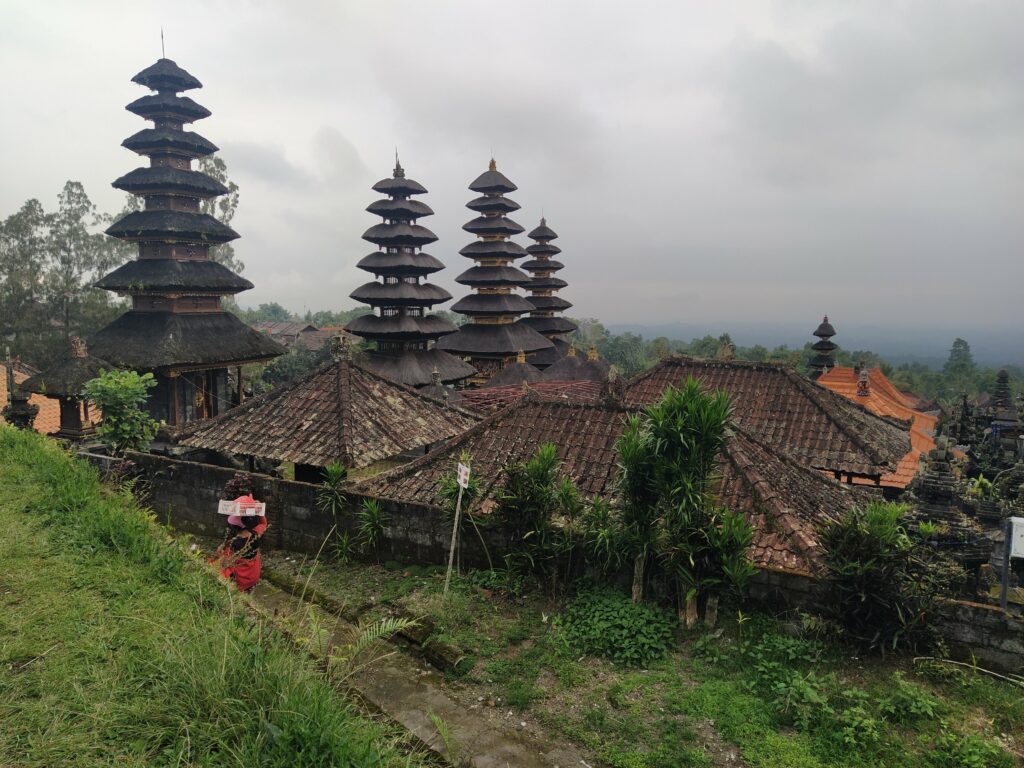
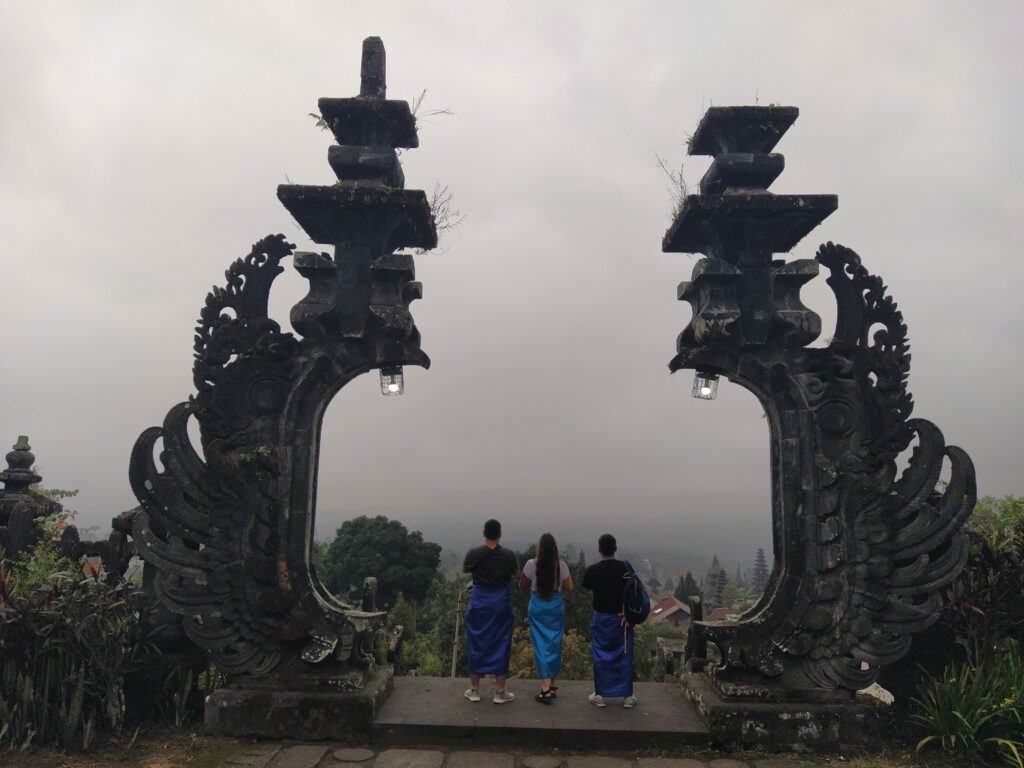
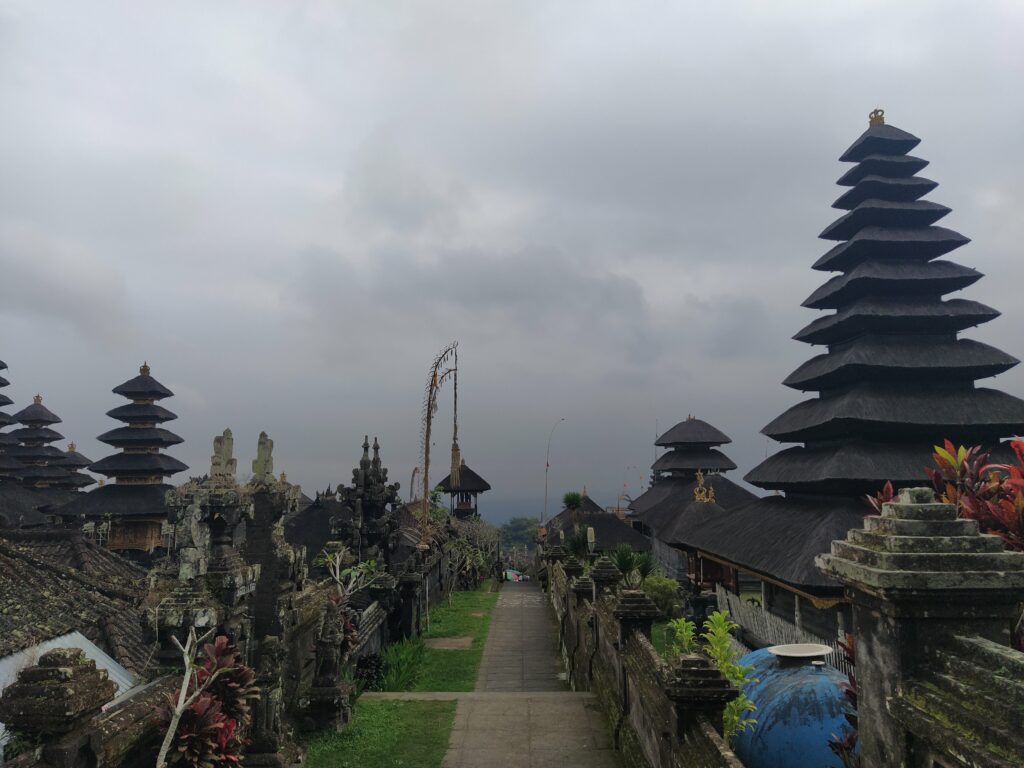
The entrance fee for international visitors is less than 10 euros, which includes a guide and traditional clothing. You can also enter the temple for prayer with the assistance of the guide, an experience you should not miss and one that will remain unforgettable. If you’re interested in Bali’s culture, history, and religion, visiting Besakih is a must.
Third day
The third day begins with a delicious breakfast at our hotel, and with our driver, we head towards central and southern Bali, to the Ubud area. Our first stop is at the Tukad Cepung Waterfall, one of the most magical and unique natural attractions on the island. This waterfall is located inside a cave, and when light filters through the cracks, it creates an impressive atmosphere. The journey to the waterfall is a short 15-minute hike, passing through dense tropical vegetation.
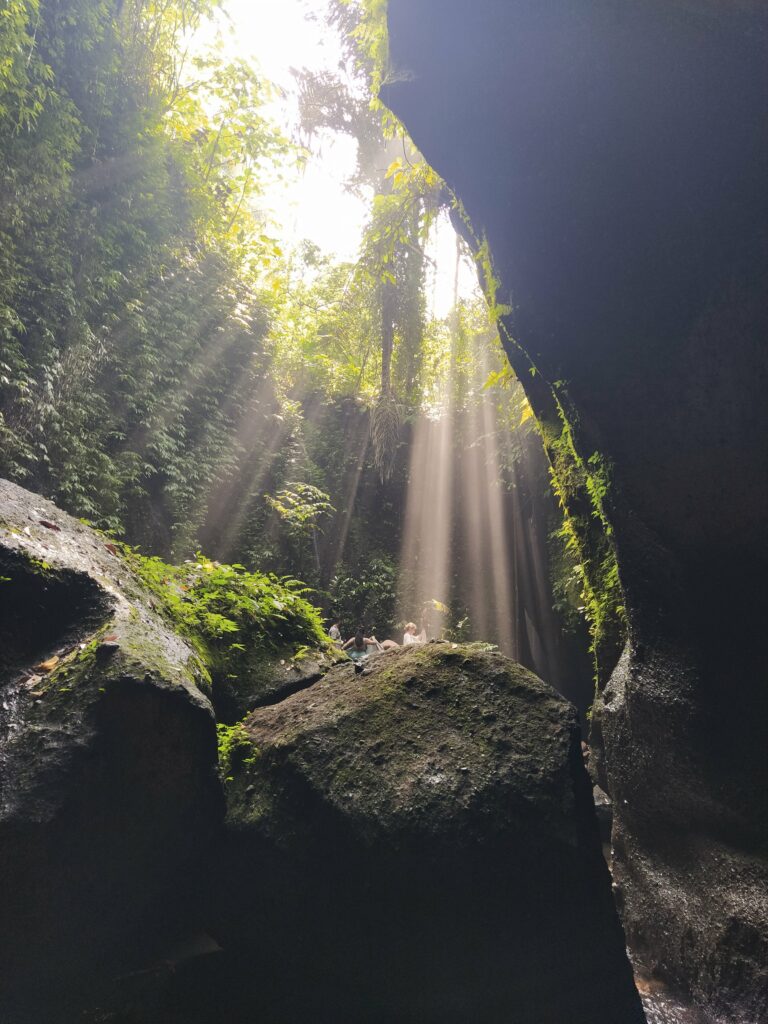
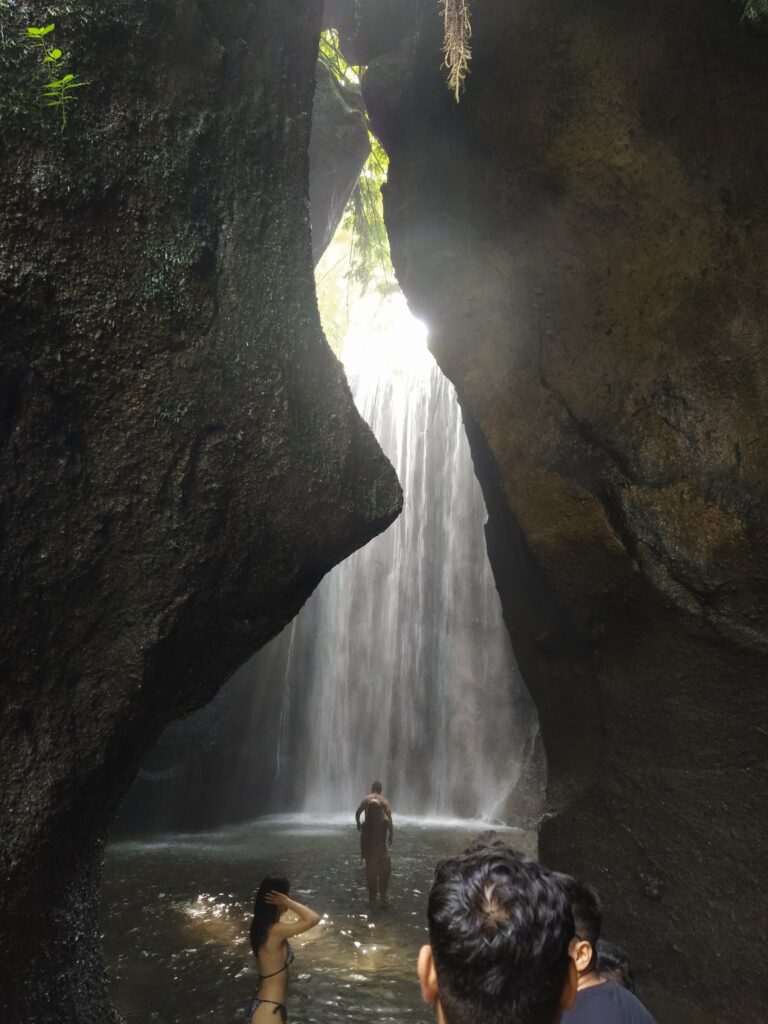
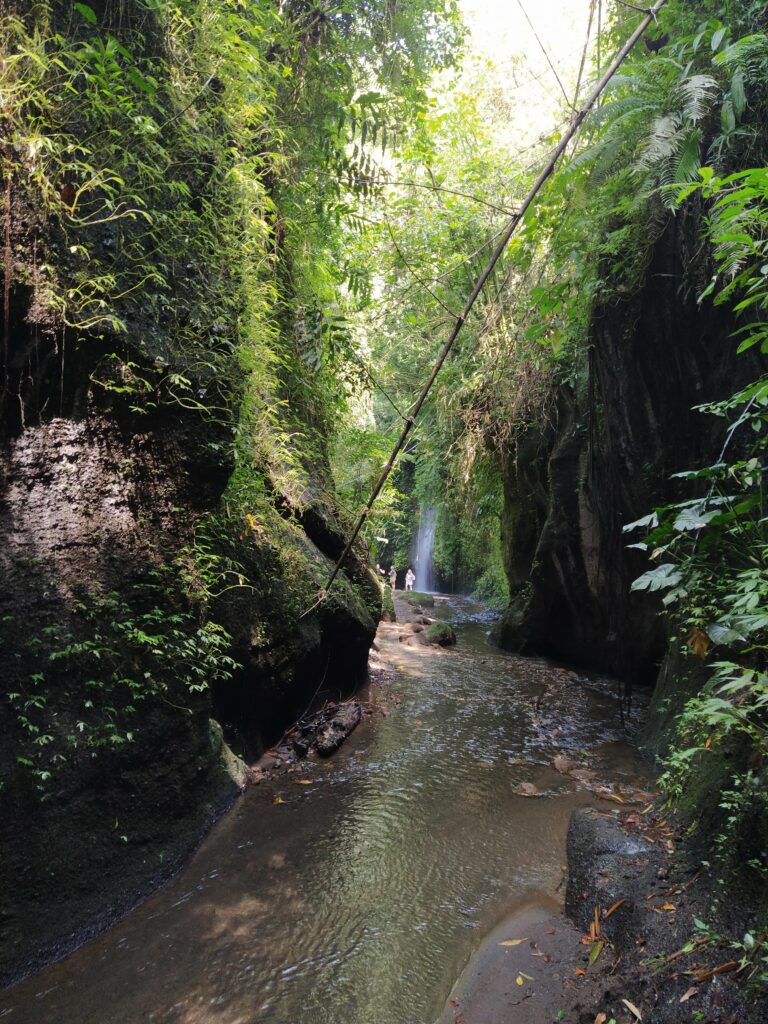
We spend the rest of the day in Ubud, one of the most popular and beloved areas of Bali, and there is no doubt why. It’s a place that perfectly combines natural beauty, cultural heritage, and spirituality. It is the cultural center of Bali and has maintained an authentic character.
Ubud is surrounded by lush rice terraces, tropical forests, and hills, making it ideal for hiking or simply relaxing in nature. The Tegalalang rice terraces are particularly famous, but also quite touristy. The town is filled with temples such as Pura Taman Kemuda Saraswati. A visit to the Ubud Palace and the Monkey Forest is definitely worth it. The entrance fee is only 5 euros, but extra caution is needed as some macaques can become a bit aggressive. The Monkey Forest is open daily from 9 o’clock to 5 o’clock in the evening. In Ubud, you can also find wonderful restaurants offering local cuisine. Undoubtedly, Ubud should be on your list as the ultimate destination for an authentic Balinese experience.
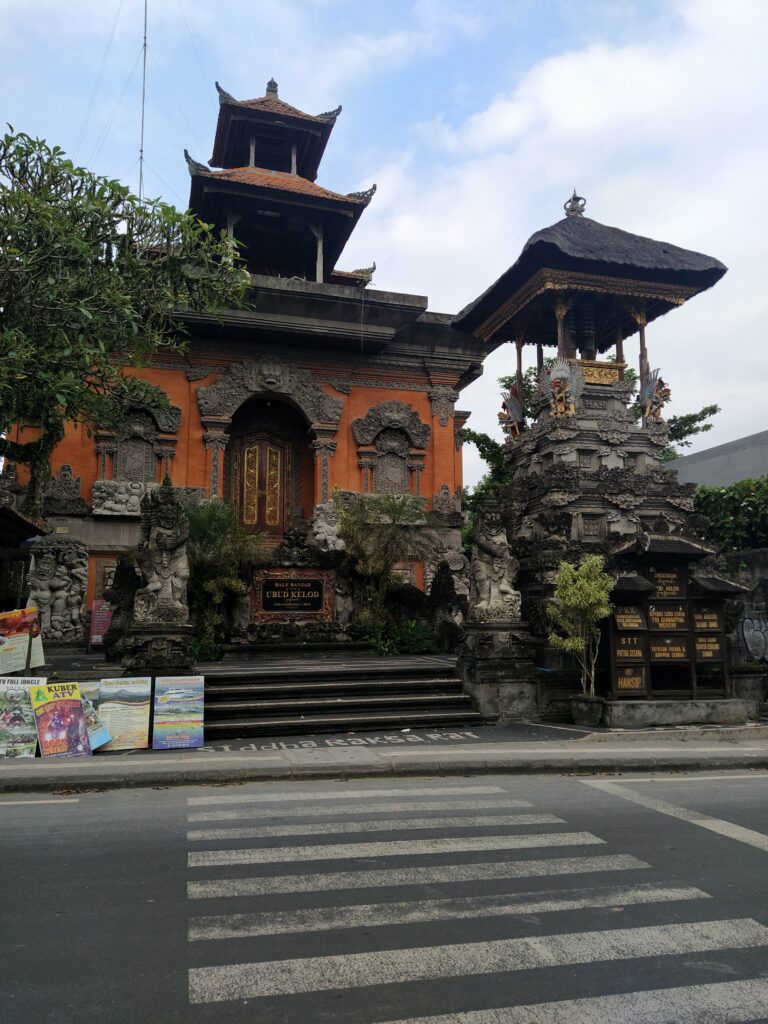
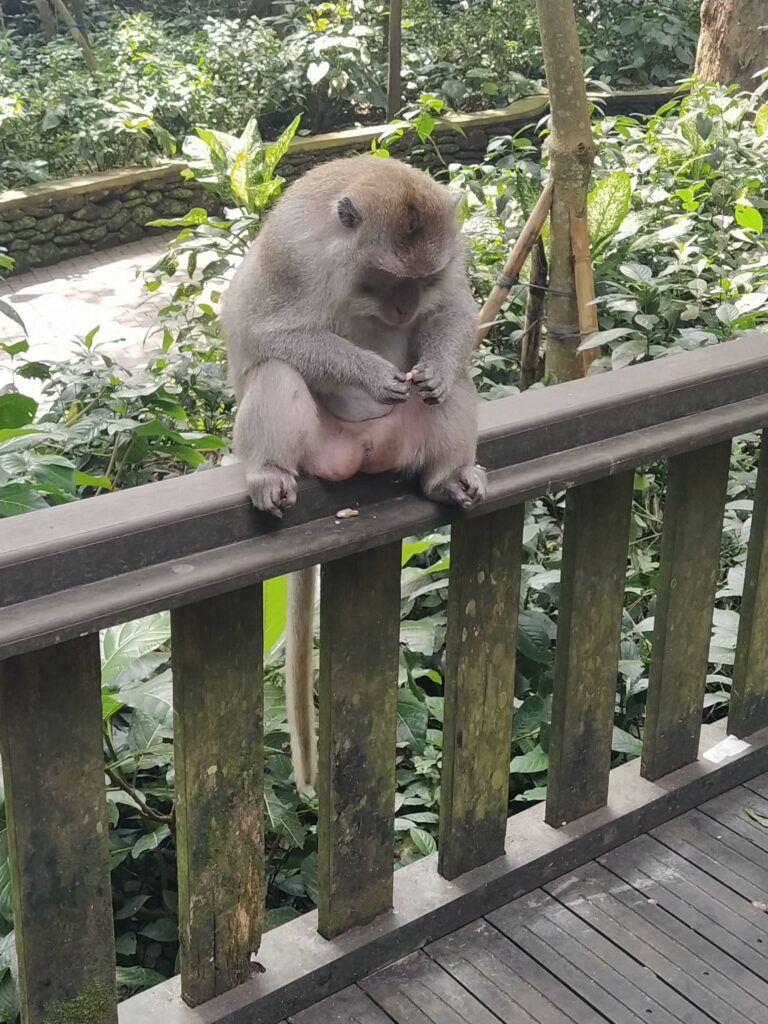
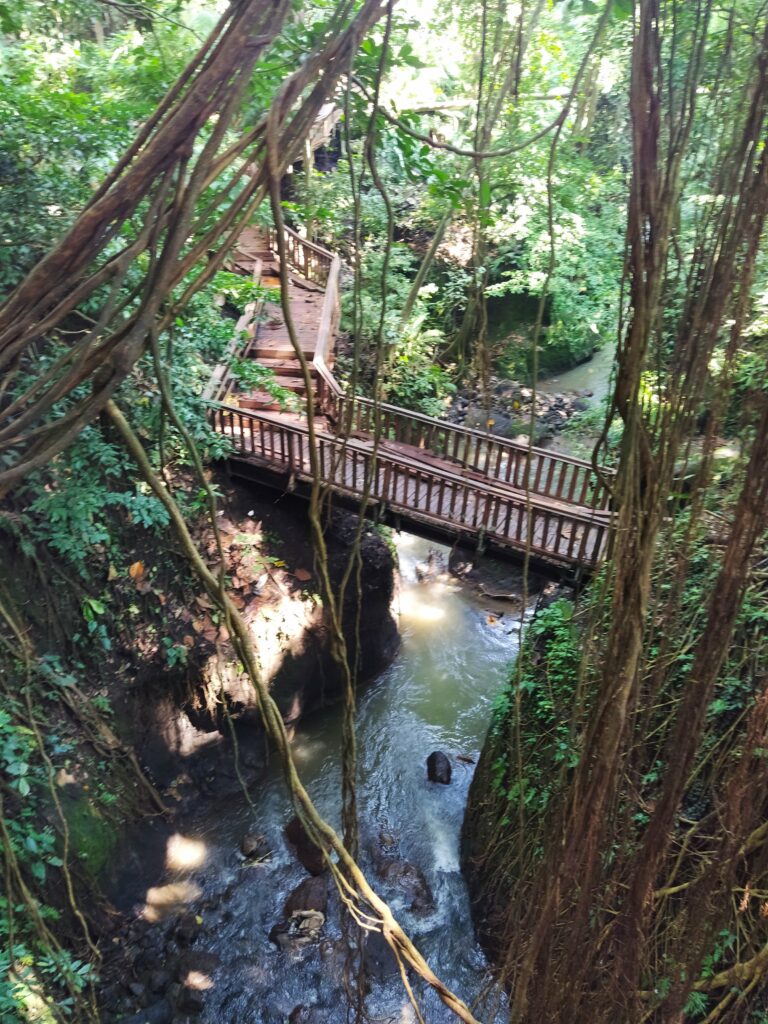
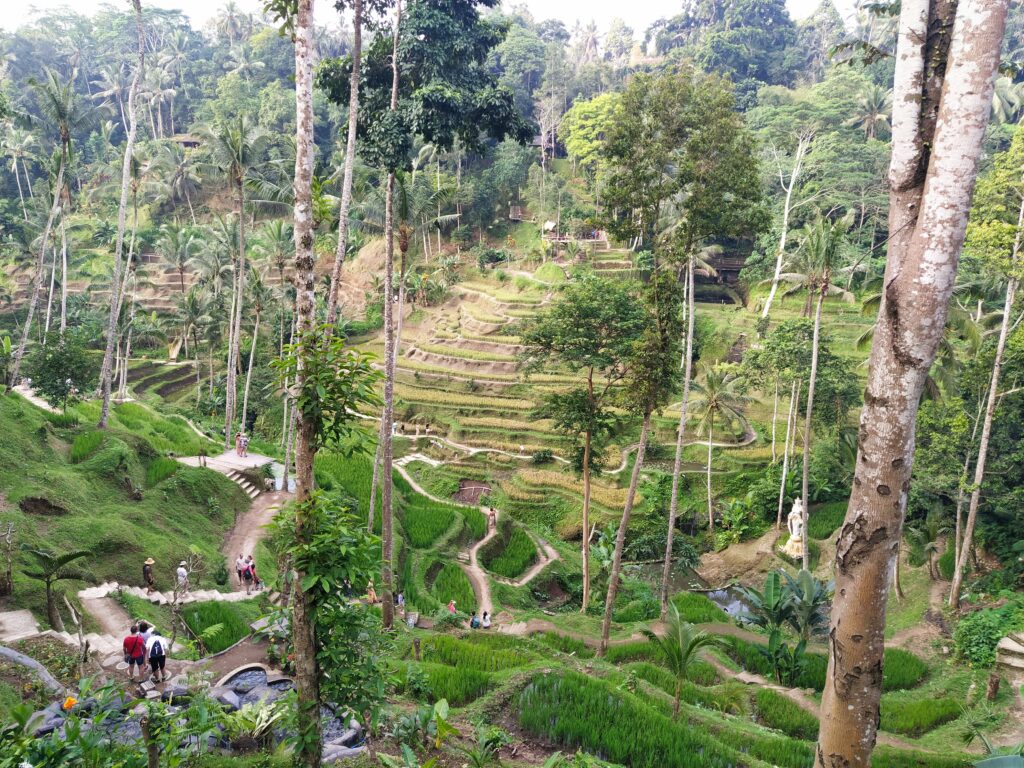
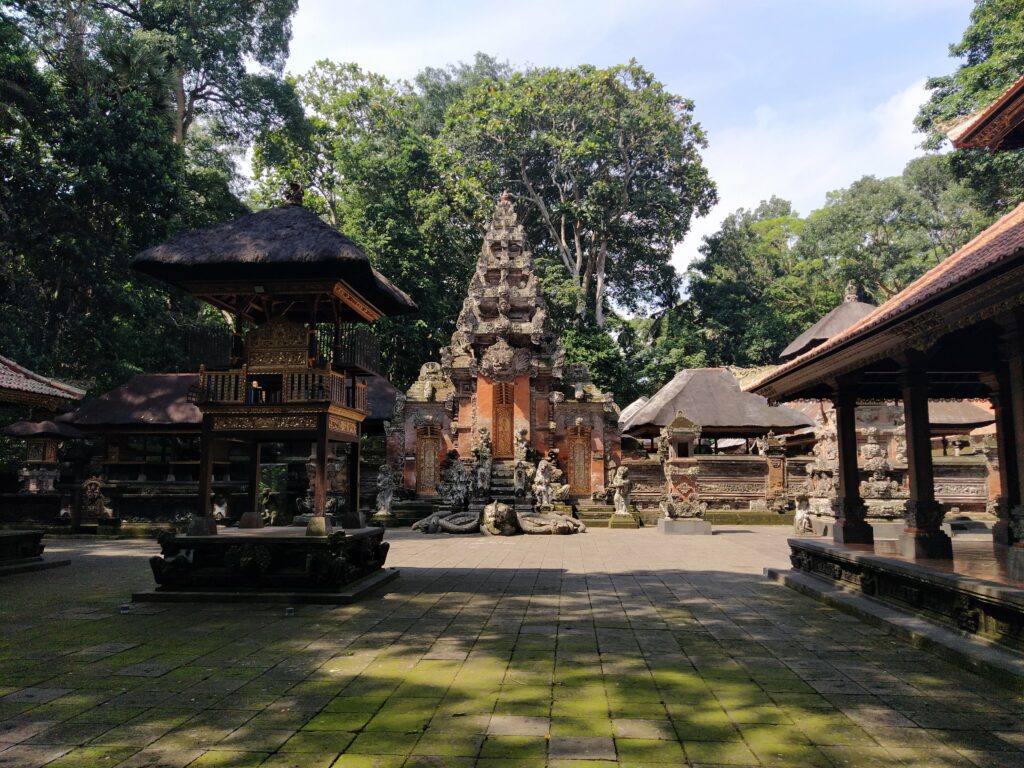
Last day
Just before we leave Bali, we head to the Kanto Lampo waterfall in the southern part of Bali. Its distinctive feature is that the water cascades in sloping layers, creating a beautiful waterfall that splits into sections, giving the impression that the water flows over steps. Our last stop is the eastern side of Denpasar, which is also touristically developed with a beach for swimming, shops and restaurants.
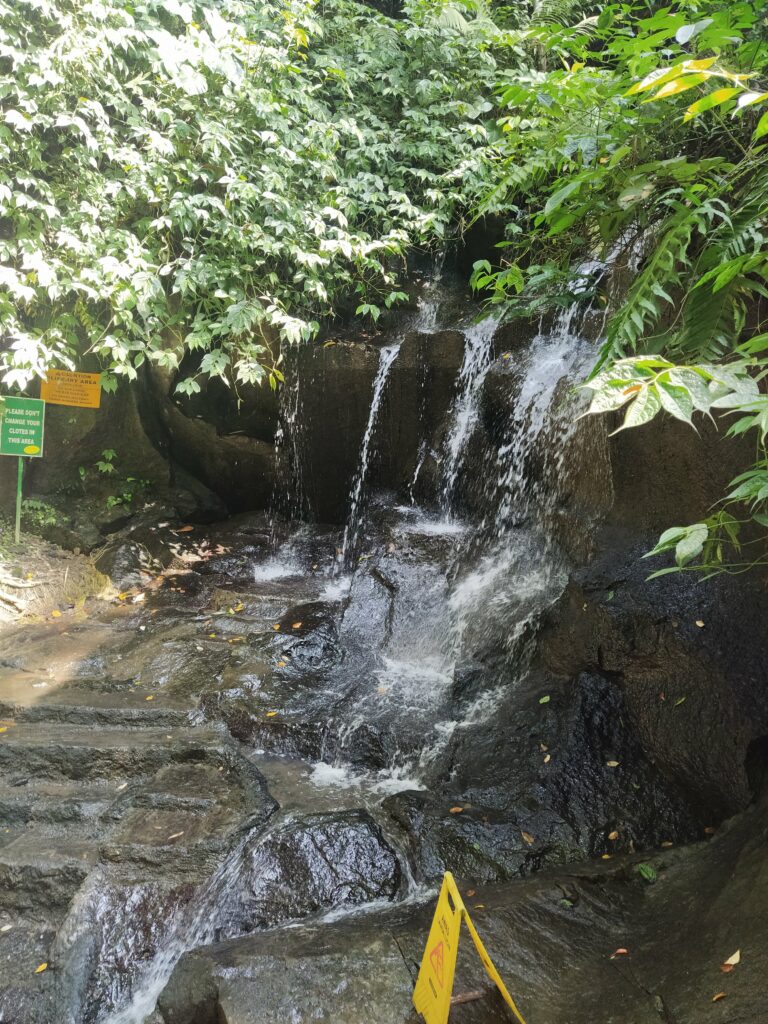
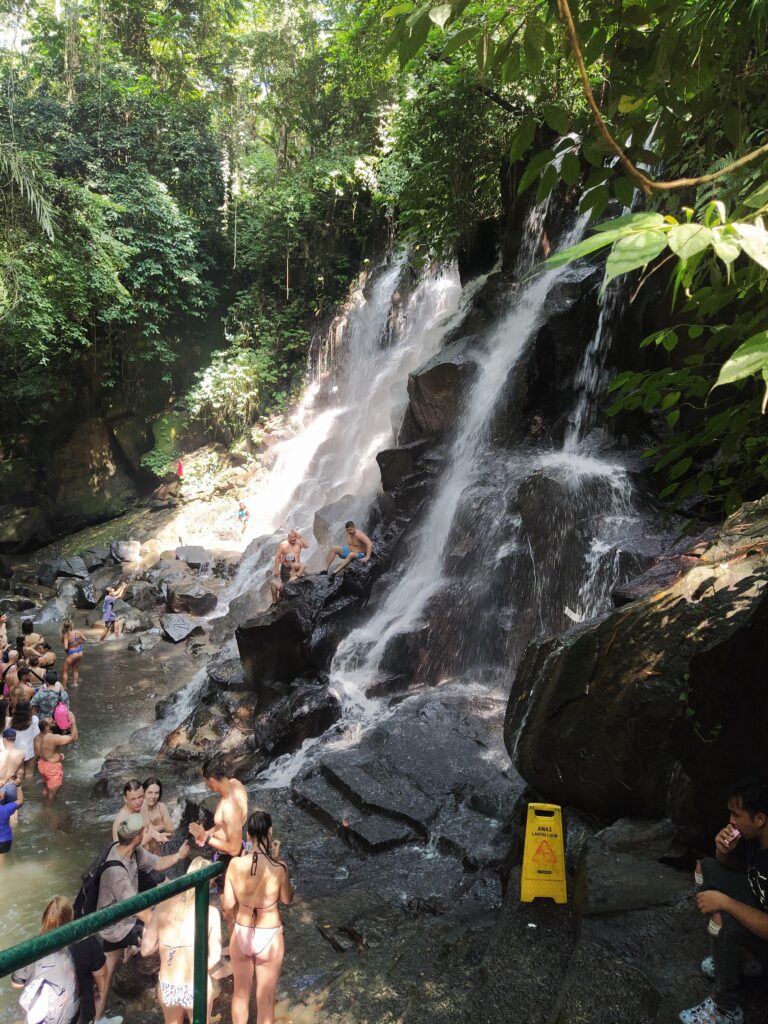
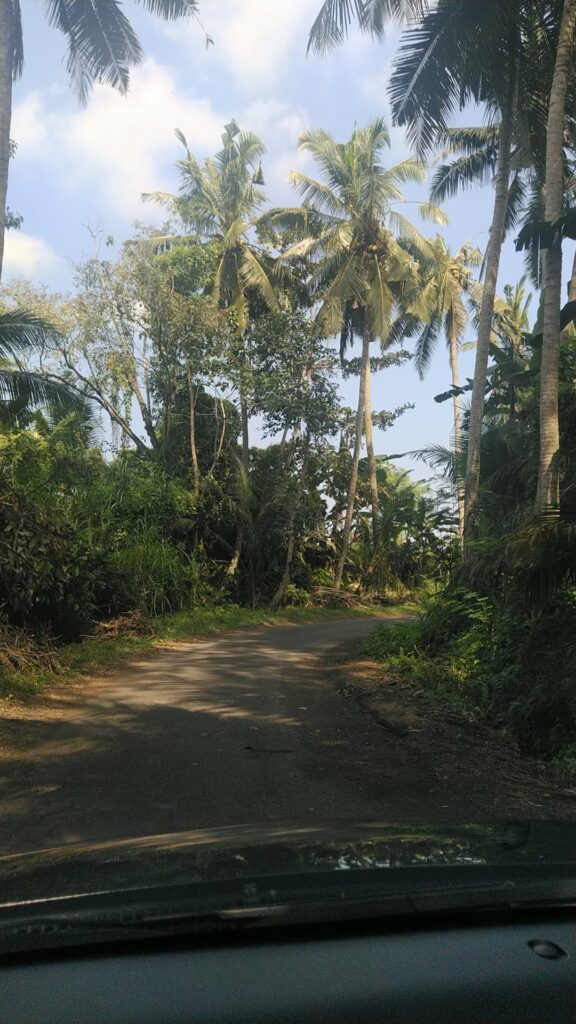
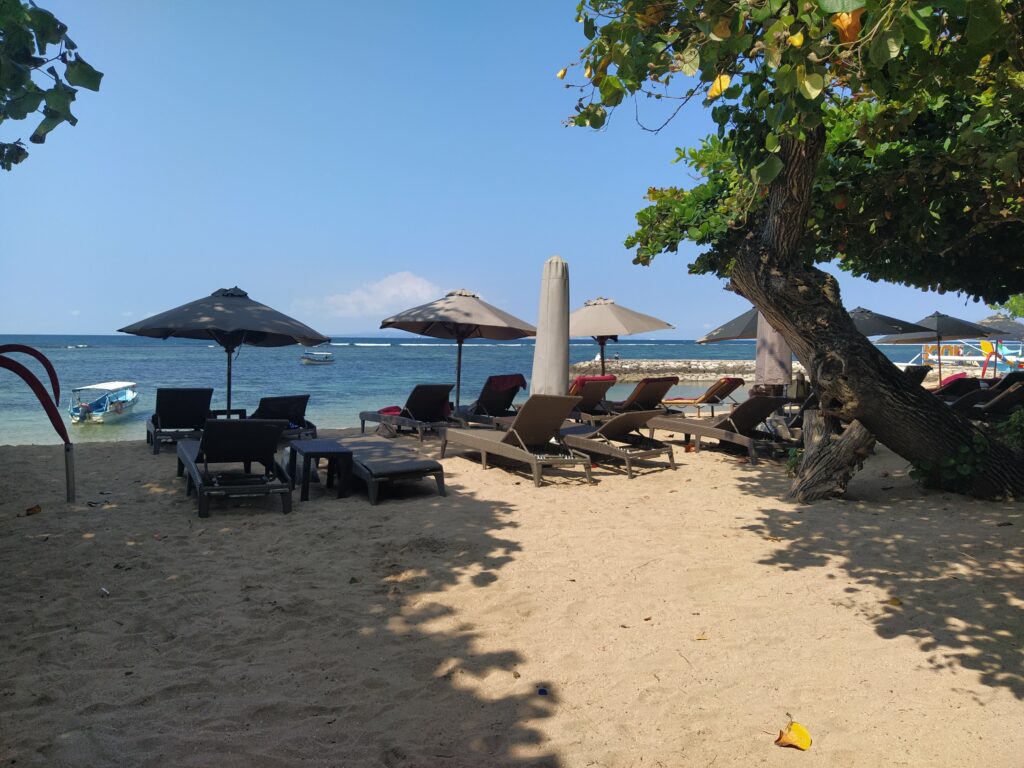
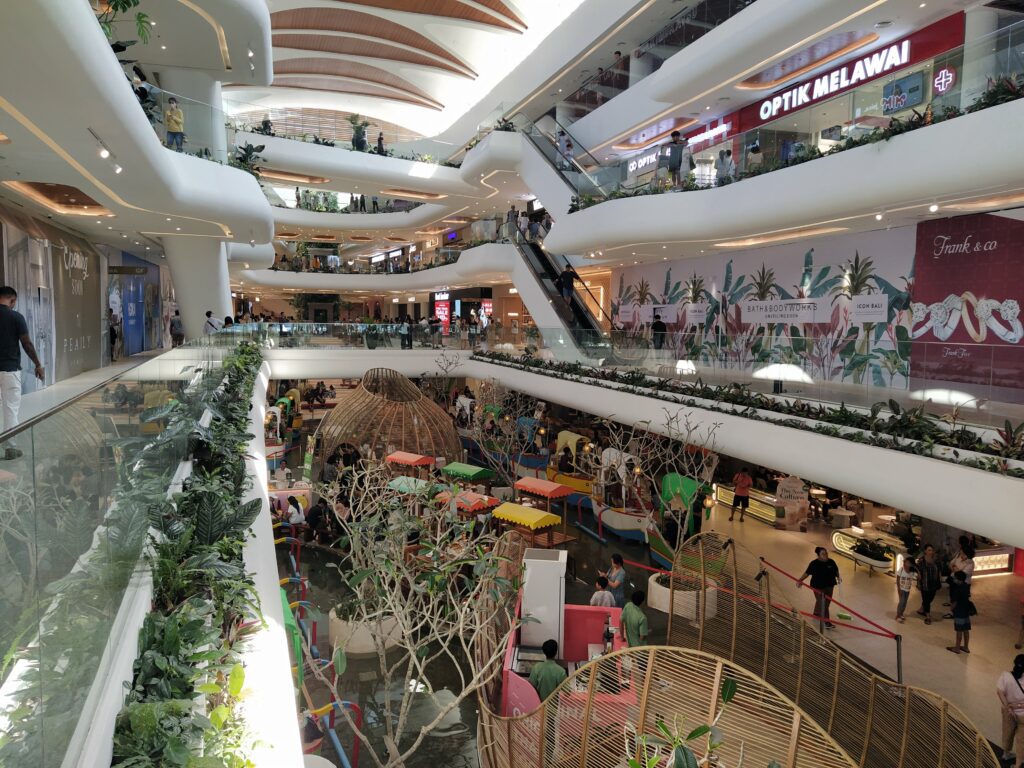
Accommodation
Accommodation in Bali varies greatly, offering a wide range of options to suit all tastes and budgets. We stayed in three different locations to explore as many corners of the island as possible. What stands out in Bali is the opportunity to stay in luxury accommodations right in the jungle, at affordable prices. It’s an experience you should take advantage of, just like we did.
Bali Jungle camping, isolated in the heart of Bali’s jungle, this accommodation is in perfect harmony with nature. It’s located in the middle of coffee plantations in Padangan, Central Bali. It offers spacious wooden cabins at very good rates (55 euros for 3 people per night). Breakfast, lunch, and dinner are served with fresh fruits, vegetables, and traditional Balinese dishes. It’s ideal for those looking to relax and enjoy the beauty and tranquility of the landscape. The authenticity of the accommodation, its location, the hospitality of the host, the delicious food, and the option of transportation to any destination you wish on the island make Bali Jungle camping an excellent choice for all types of travelers.
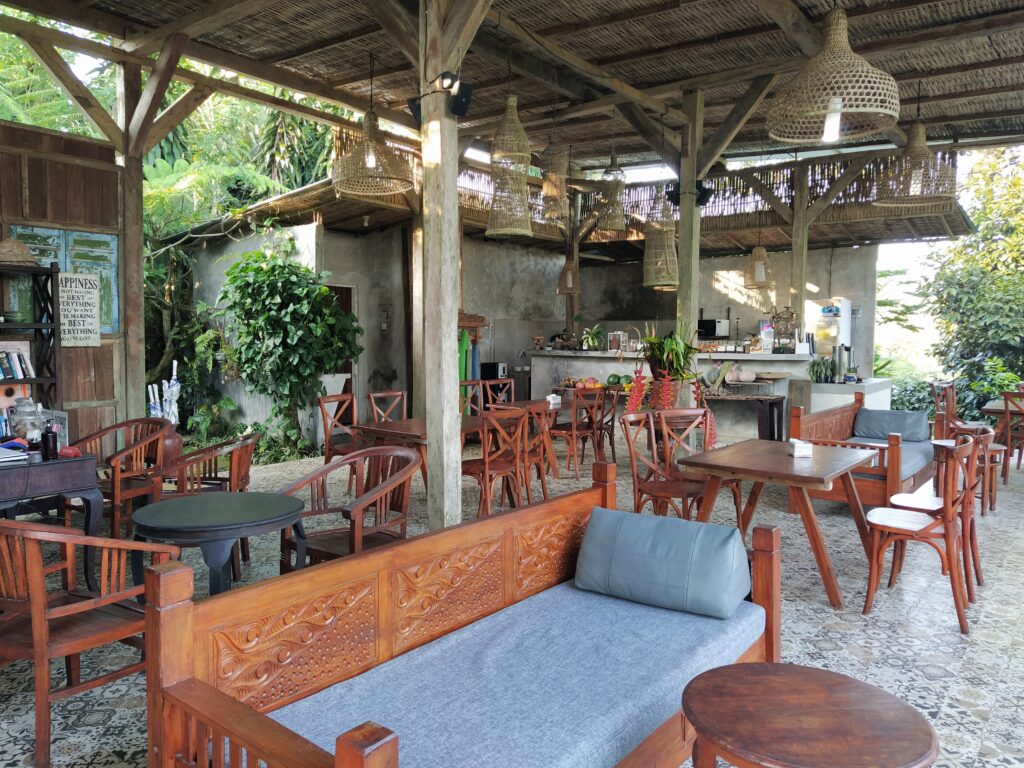
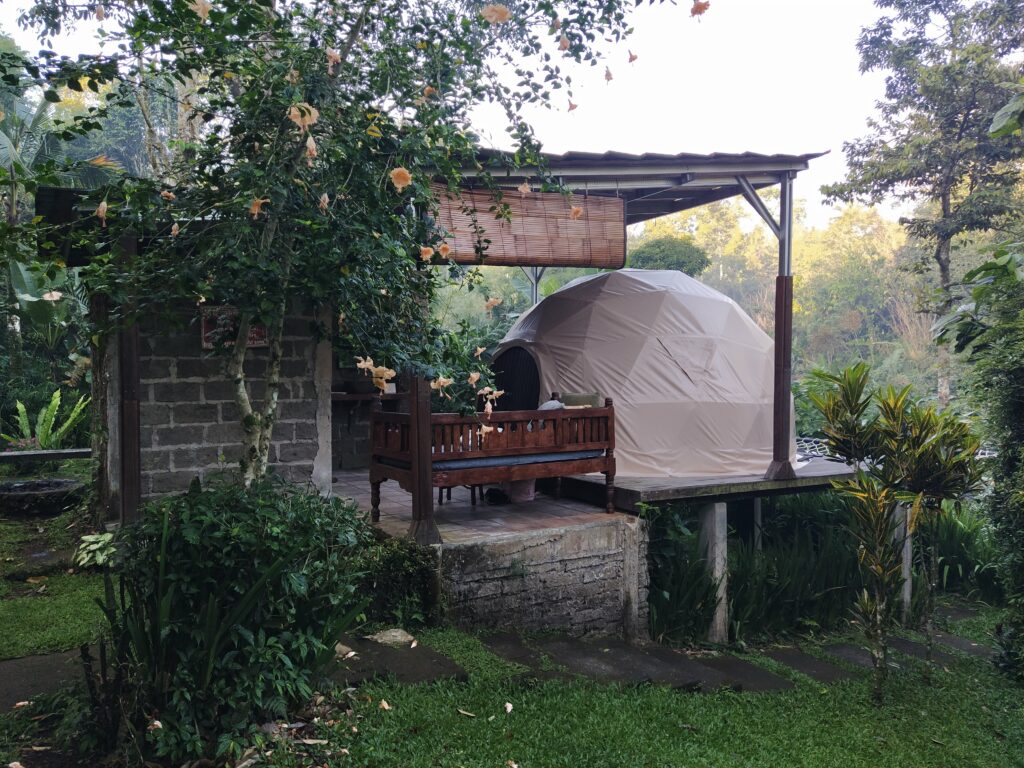
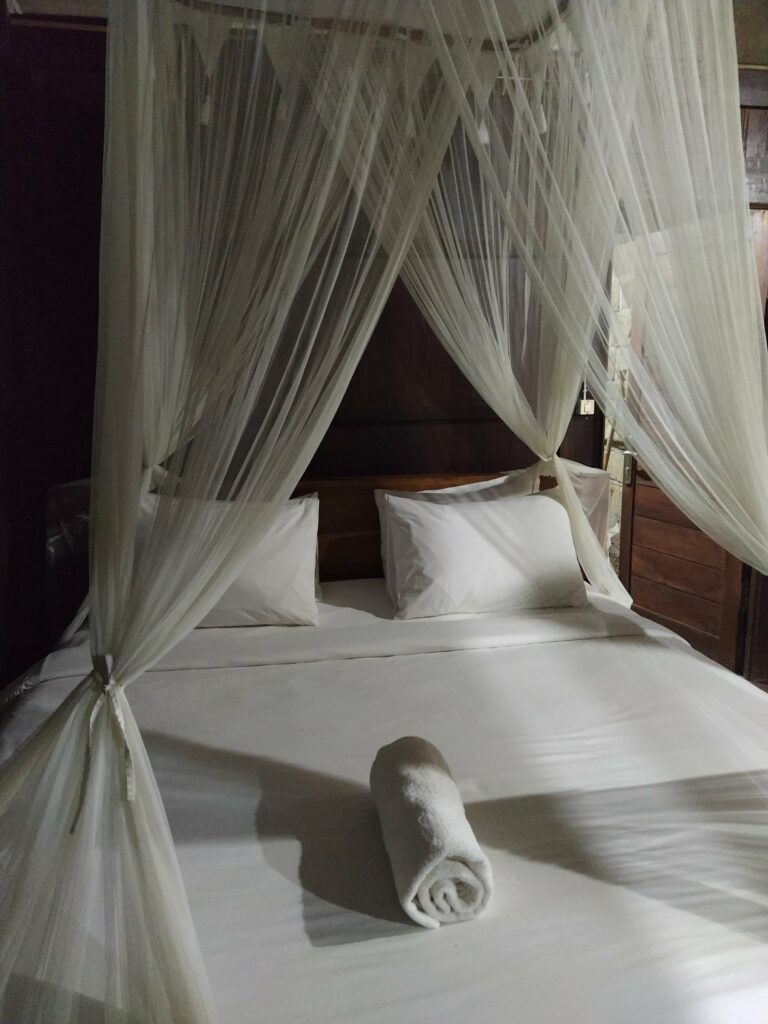
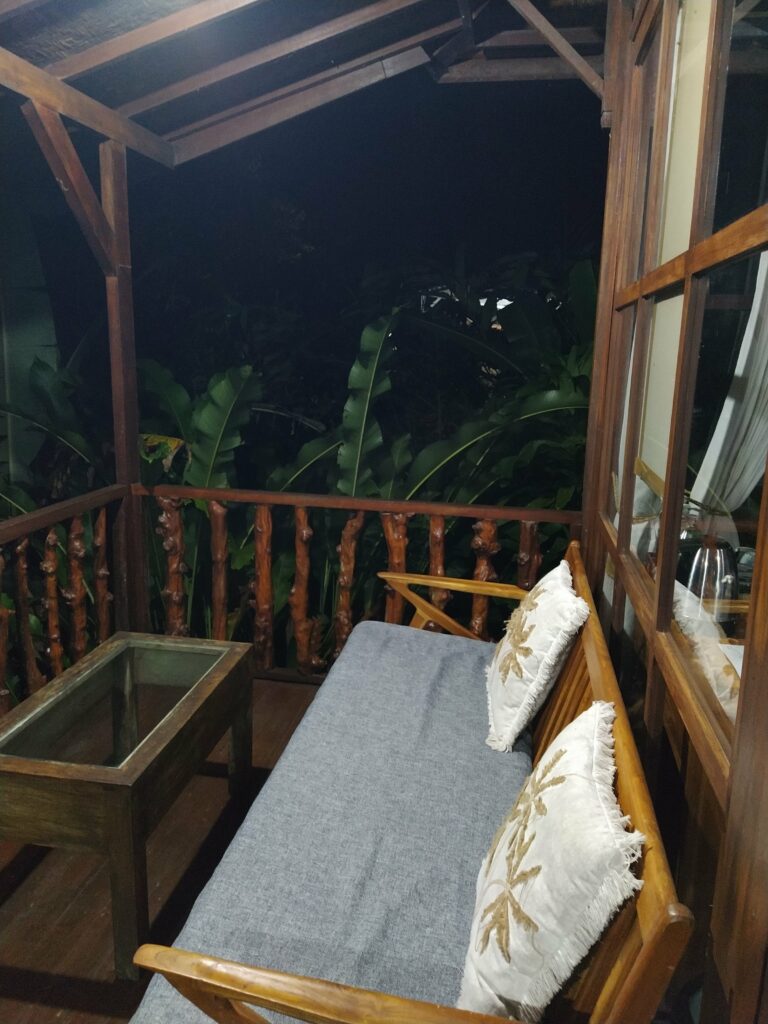
Eco Bamboo Island. If you’re looking for more luxurious accommodation in Bali that combines nature, luxury, and quality, Eco Bamboo Island is the best choice. It’s a two-story villa of 150 square meters, priced at 4,000,000 IDR or 230 euros per night. Situated next to a small river, it’s open to nature, wooden, with beautiful decor, and includes a small private pool (some frogs enjoyed it more than we did!!!). The dinner and breakfast are among the best meals we had in Indonesia, and we highly recommend this place.
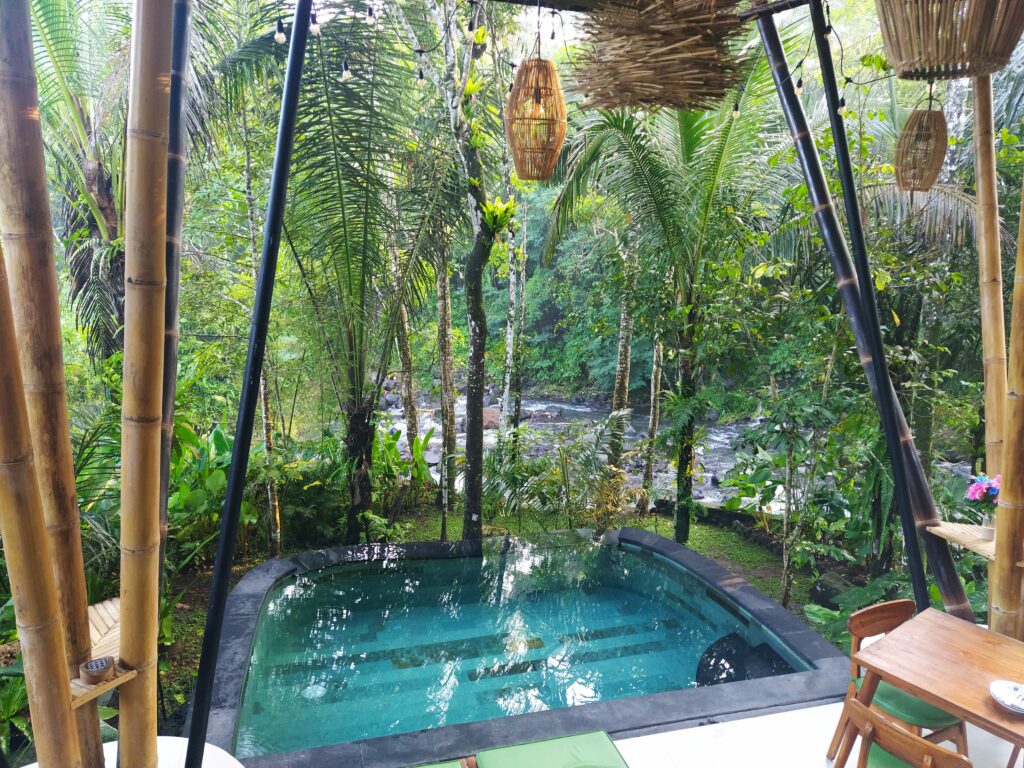

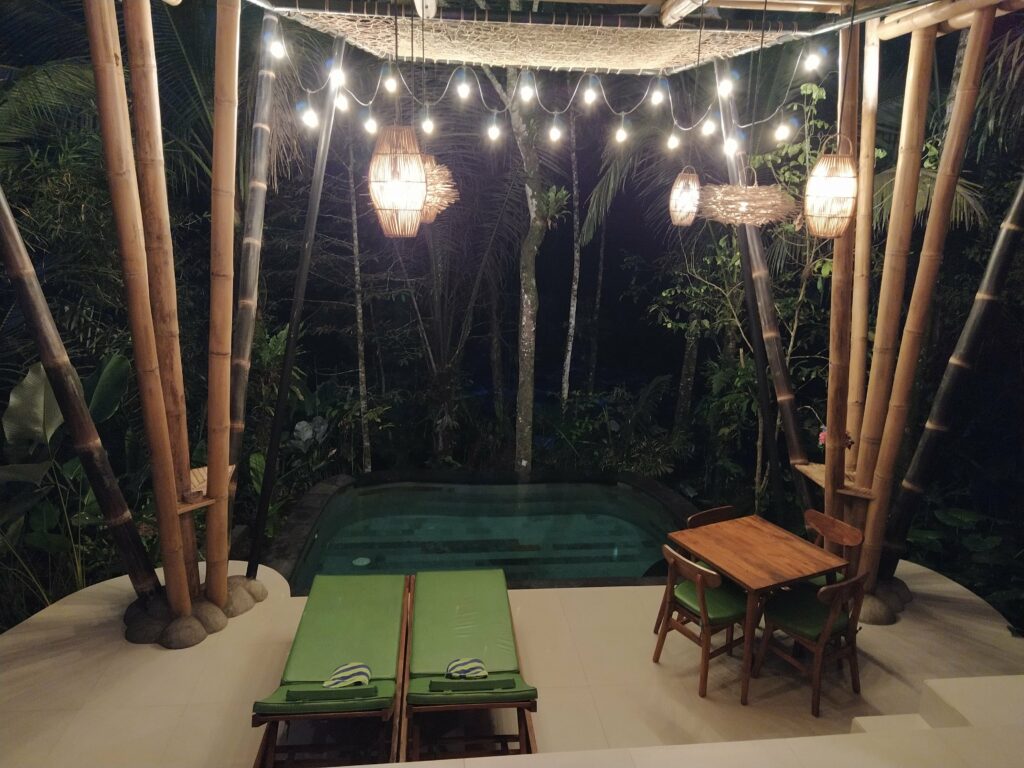
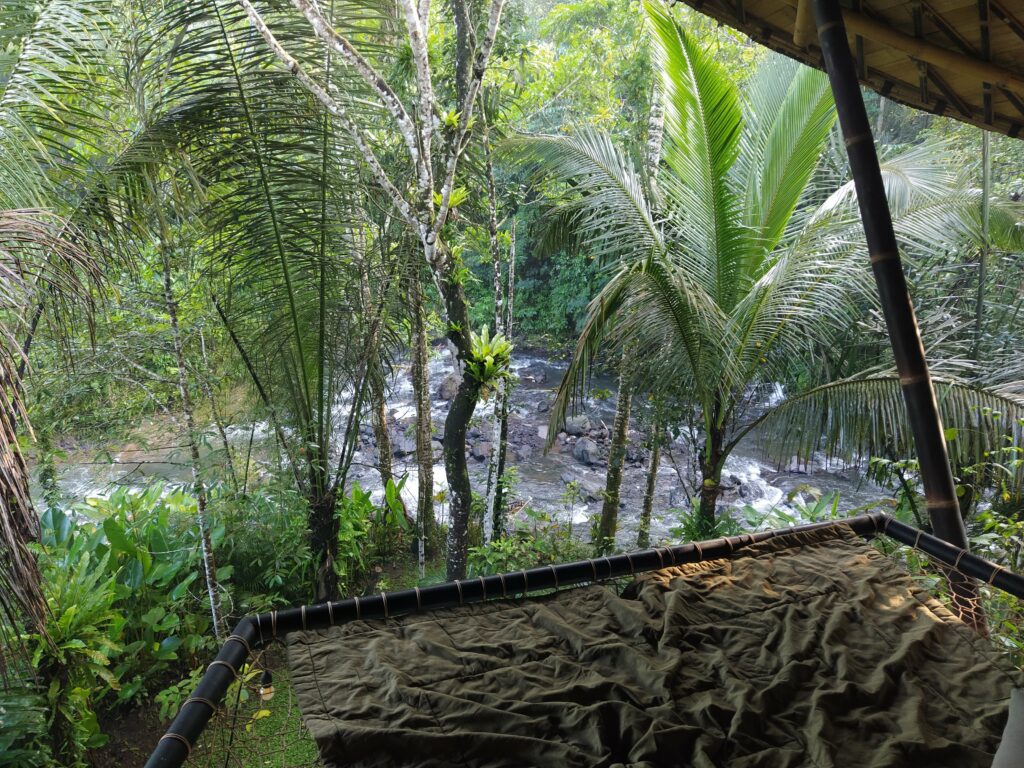
Magatama Villa by Mahaputra. Another luxury villa is located next to the Tegalalang rice terraces and not far from Ubud. For 80 euros per night, you get a 50 square meter wooden apartment with beautiful interior decor, an outdoor pool, and a terrace overlooking the rice fields. Massage and transportation services are also offered. Waking up to the magical view is the highlight of the accommodation.
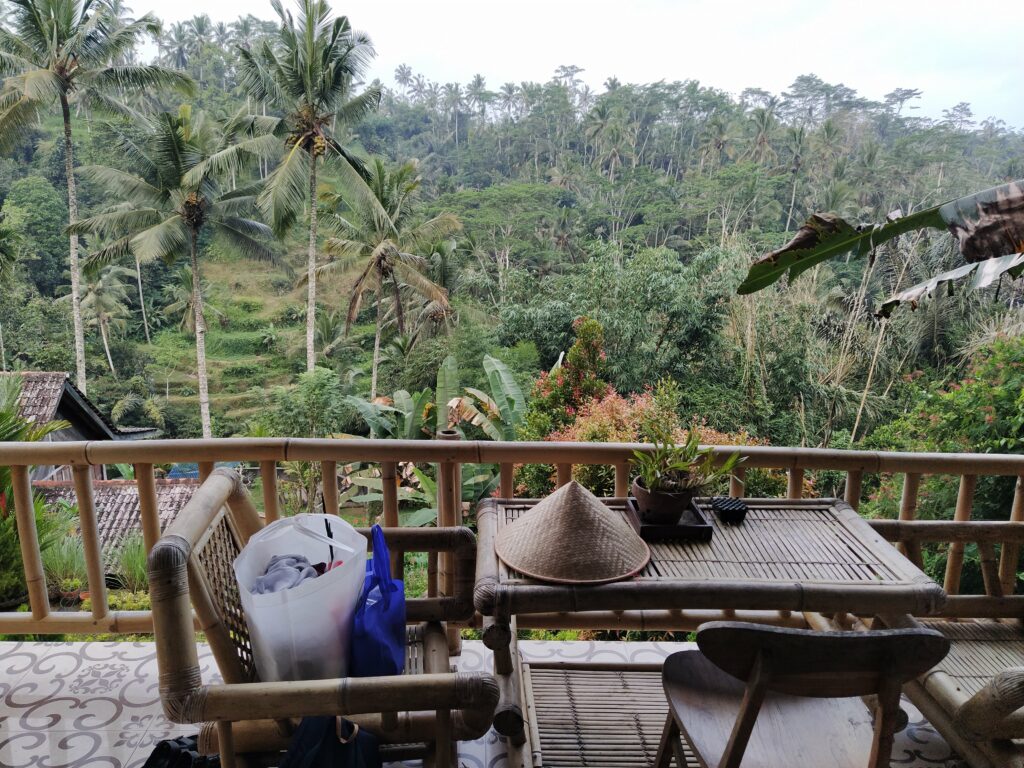
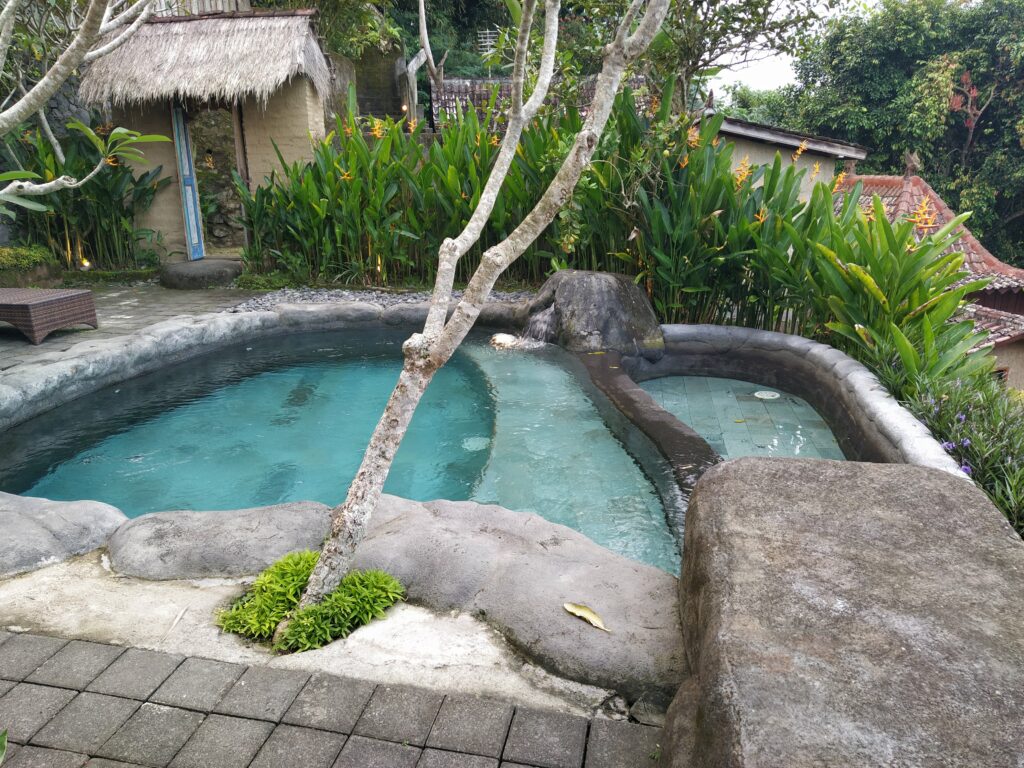
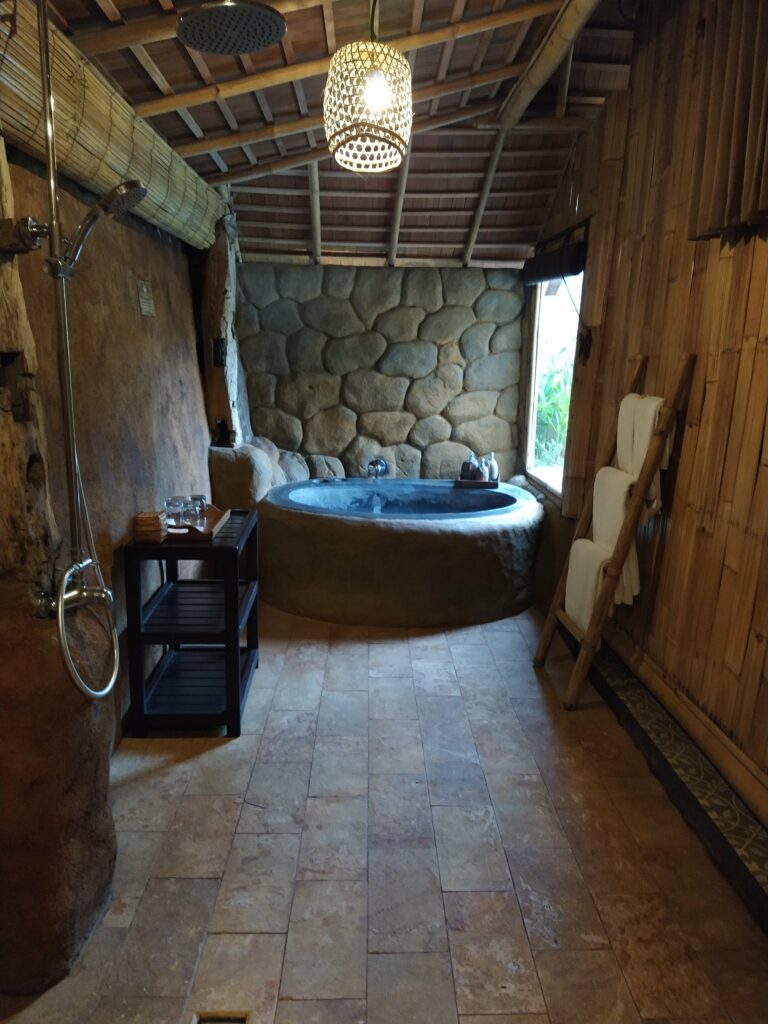
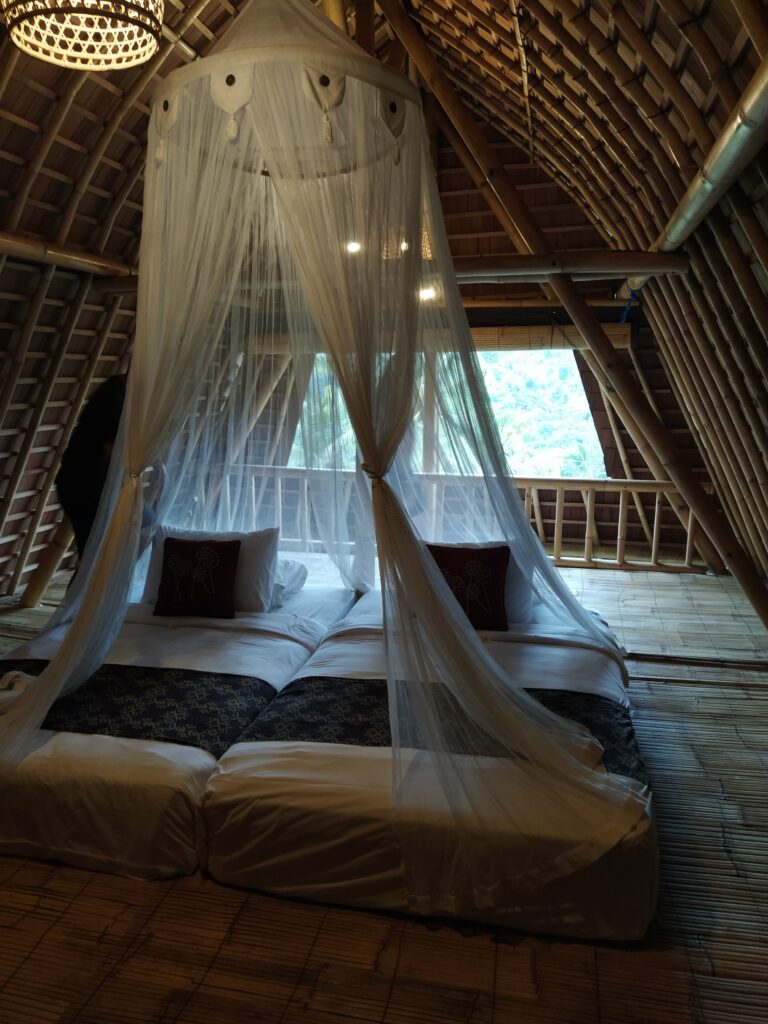
Indonesian cuisine
The Indonesian and Balinese cuisine is rich with influences from various cultures, such as Chinese, Indian, and Malaysian. Local dishes combine strong aromas, spices, and fresh fruits and vegetables. Some of the most famous dishes in Indonesia and Bali include:
Nasi Goreng – A fried rice dish and perhaps the most famous in Indonesia. It is typically served with egg, vegetables, and spicy sauces.
Mie Goreng – Fried noodles with ingredients similar to those in nasi goreng, but served with noodles instead of rice. It’s also often seasoned with soy sauce and spices.
Sate (Satay) – Pieces of meat (chicken, beef, or lamb) skewered on wooden sticks and grilled, served with a delicious peanut sauce.
Gado-Gado – A salad made from boiled vegetables (e.g., potatoes, broccoli, green beans), egg, and tofu, all covered with a spicy peanut sauce.
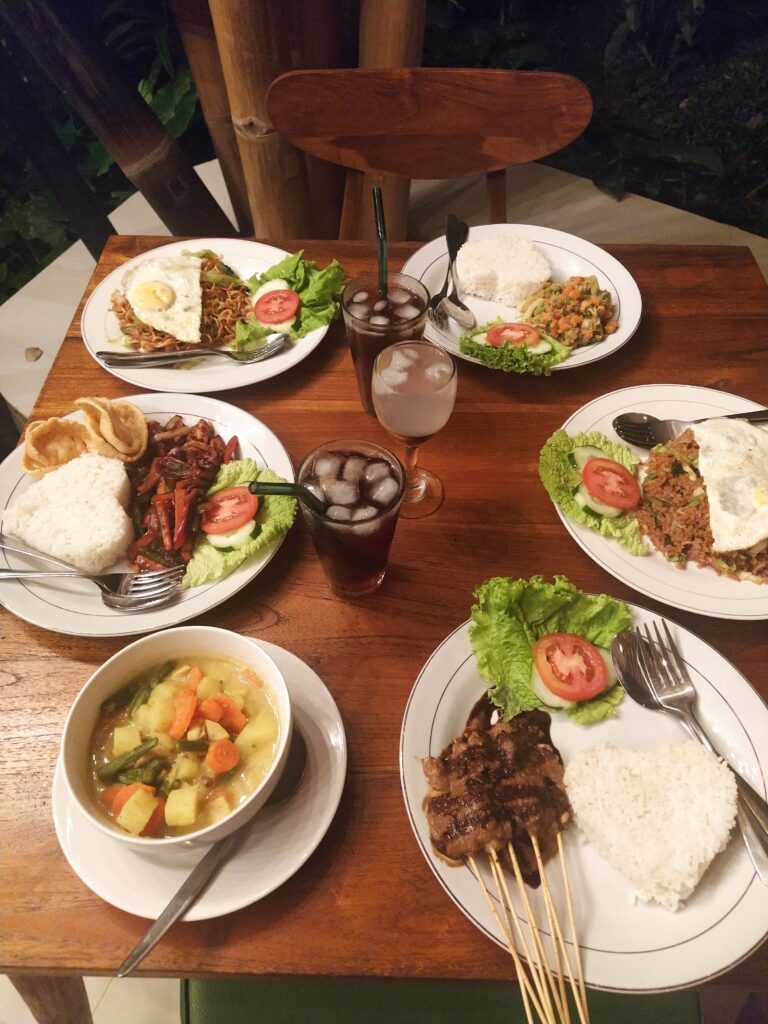
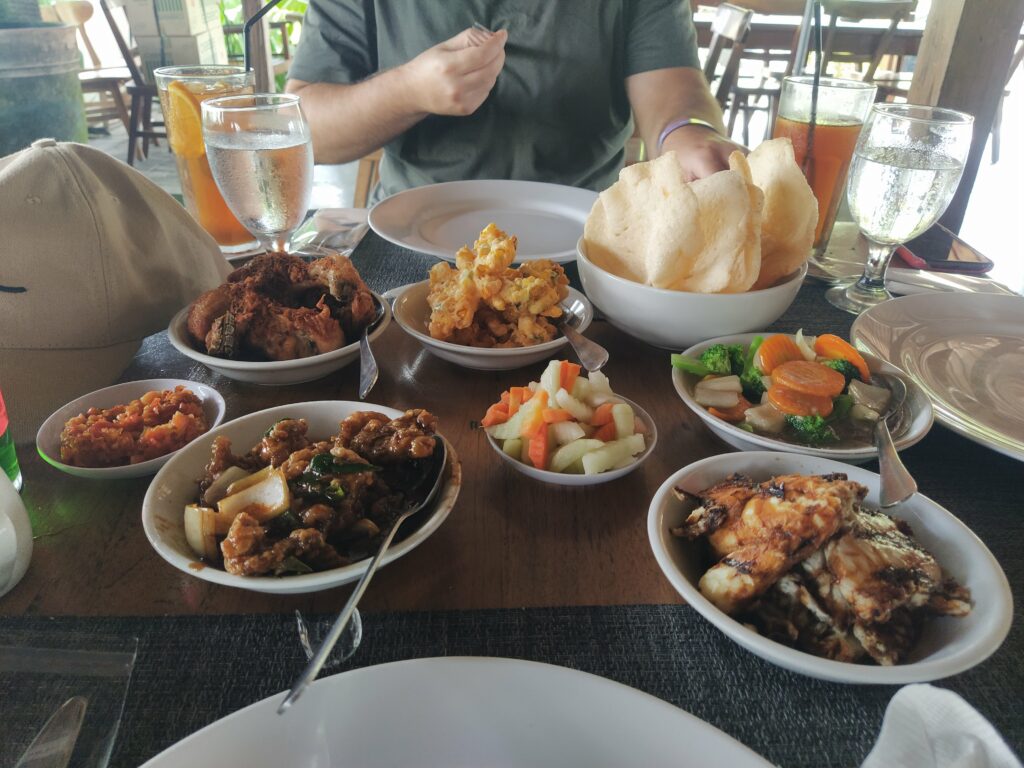

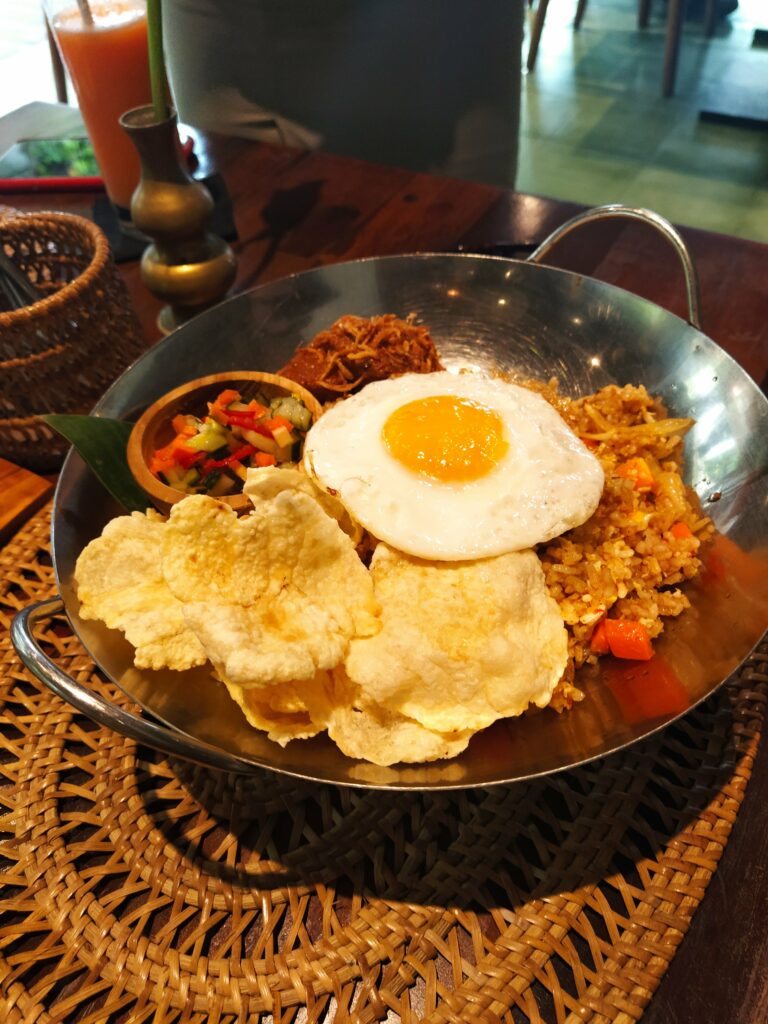

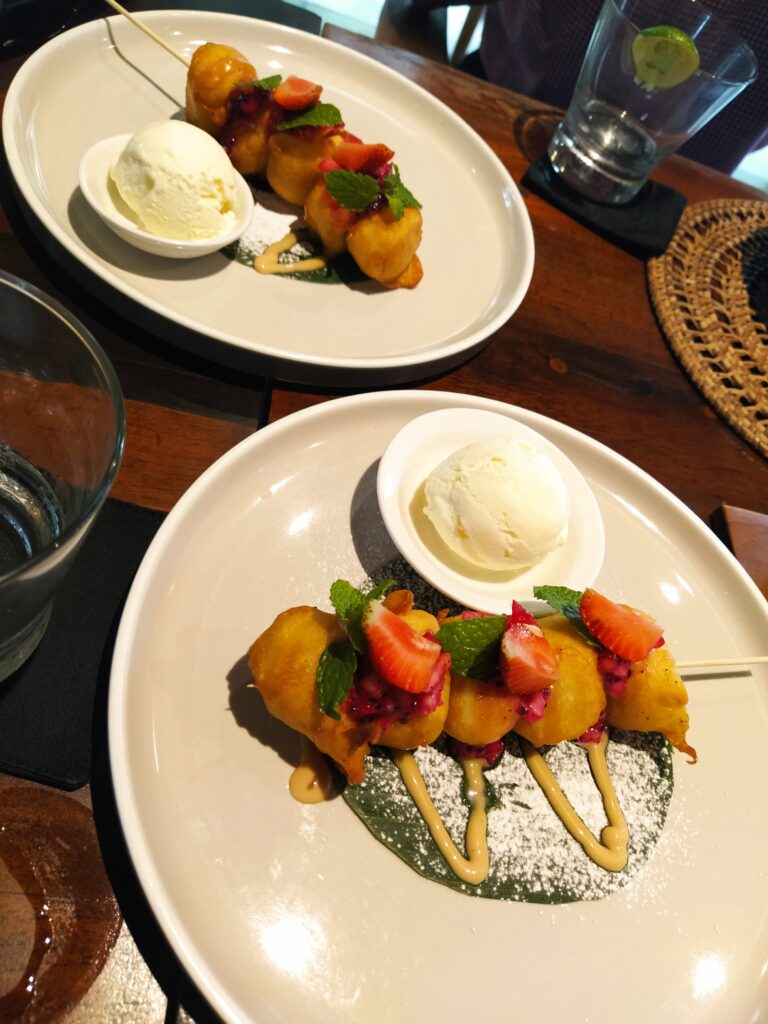
Indonesian cuisine has very bold flavors, with spices like chili, turmeric, ginger, and soy playing a major role. Coconut milk is often used to add a creamy texture and flavor. If you enjoy spicy dishes and a variety of flavors, Indonesian cuisine will surely impress you, just like it did for us.
What we loved in Bali
Bali is a blessed place. Three, four days are definitely not enough to fully enjoy this magical island and lose yourself in its atmosphere and rhythm. However, even for just a few days, Bali is a destination you will love, and there are many reasons for this:
Impressive natural landscapes with volcanoes, waterfalls, rice terraces, and Bali’s beautiful jungle
Temples and a mystical vibe from another era
Incredible hospitality from the locals
Delicious food
Affordable prices
What we didn’t like
The traffic congestion, mainly in the western part of Denpasar and to a lesser extent in Ubud.
The very touristy area of Kuta.
